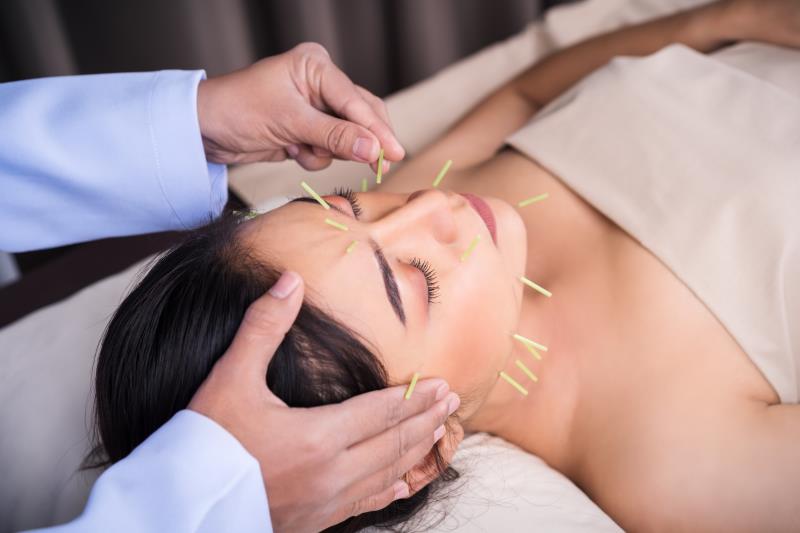
Acupuncture significantly reduces the frequency of migraine attacks compared with sham intervention in patients suffering from episodic migraine without aura, a recent study finds.
“[As] a considerable number of patients do not respond well to drug treatment, cannot tolerate the adverse effects of drugs, or have contraindications … our results show that acupuncture can be recommended as an effective alternative treatment,” said the researchers.
The multicentre trial randomized 150 patients (mean age 36.5 years, 82 percent women) with episodic migraine without aura in a 2:2:1 ratio to treatment with manual acupuncture, sham acupuncture, or no intervention, all in addition to usual care.
Manual acupuncture involved needling at the true acupuncture points whereas sham acupuncture comprised nonpenetrating needling at heterosegmental nonacupuncture points, for 20 sessions, 30 minutes each, over 8 weeks. They were followed up for another 12 weeks after the end of treatment. [BMJ 2020;doi:10.1136/bmj.m697]
Compared with sham intervention, the reduction in migraine days from baseline was significantly greater with manual acupuncture during follow-up at weeks 13–20. Specifically, the mean reduction from baseline with manual acupuncture vs sham control was 3.5 vs 2.4 days (p=0.005) at weeks 13–16 and 3.9 vs 2.2 days (p<0.001) at weeks 17–20, respectively.
Manual acupuncture also led to a significantly greater reduction in the frequency of migraine attacks compared with sham control during weeks 17–20 (mean, 2.3 vs 1.6; p<0.001).
Similarly, there were significant improvements in migraine severity, as indicated on the visual analogue scale (p=0.005) and Migraine-Specific Quality-of-Life Questionnaire (p<0.05 for all subscales), in favour of manual acupuncture.
The findings were consistent across all outcomes above when comparing manual acupuncture to usual care, which comprised advice on lifestyle and self-management.
There were no reports of severe adverse events in any groups.
Good evidence that acupuncture works
“We now have good evidence that acupuncture is an effective treatment for episodic migraine,” commented Dr Heather Angus-Leppan of the Royal Free London NHS Foundation Trust, UK, in an accompanying editorial. [BMJ 2020;doi:10.1136/bmj.m1096]
While the effects of acupuncture may be modest in terms of reduction in migraine days, Angus-Leppan wrote that the findings “help to move acupuncture from having an unproven status in complementary medicine to an acceptable evidence-based treatment.”
As the majority of people with frequent migraine do not have an effective preventive treatment, she noted that acupuncture can be useful as an additional tool in the armamentarium for migraine treatment.
“[Based on our findings,] acupuncture can be recommended as a prophylactic treatment … When discussing prophylactic treatment strategies with patients, clinicians should provide them with information about acupuncture as an option,” concluded the researchers.
While the effects of acupuncture were sustained for 12 weeks after treatment in the study, the researchers suggested that longer follow-up periods are required to understand the durability of the treatment in the long term.